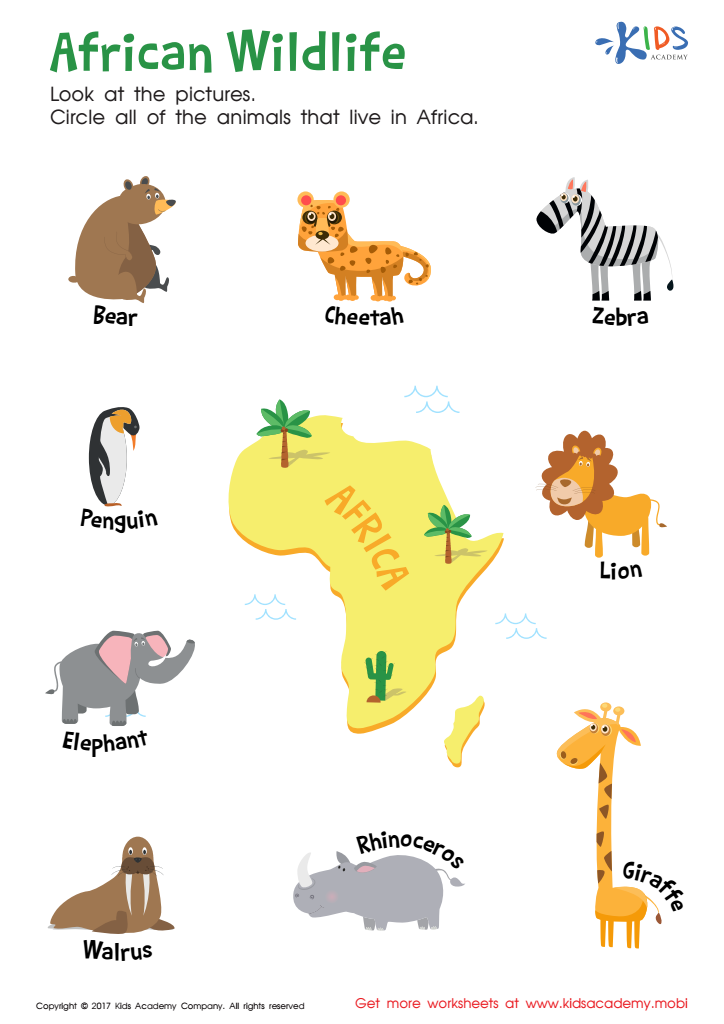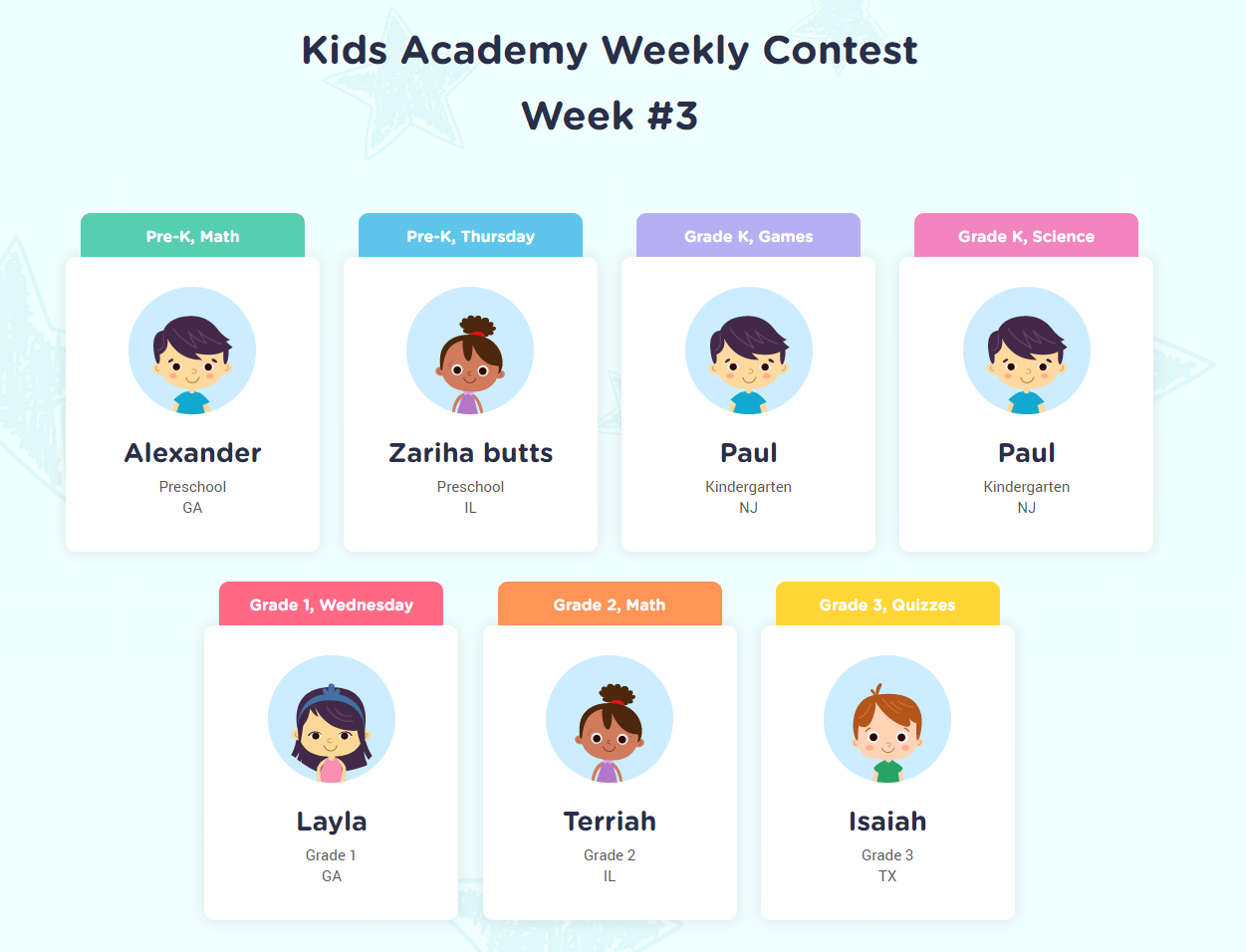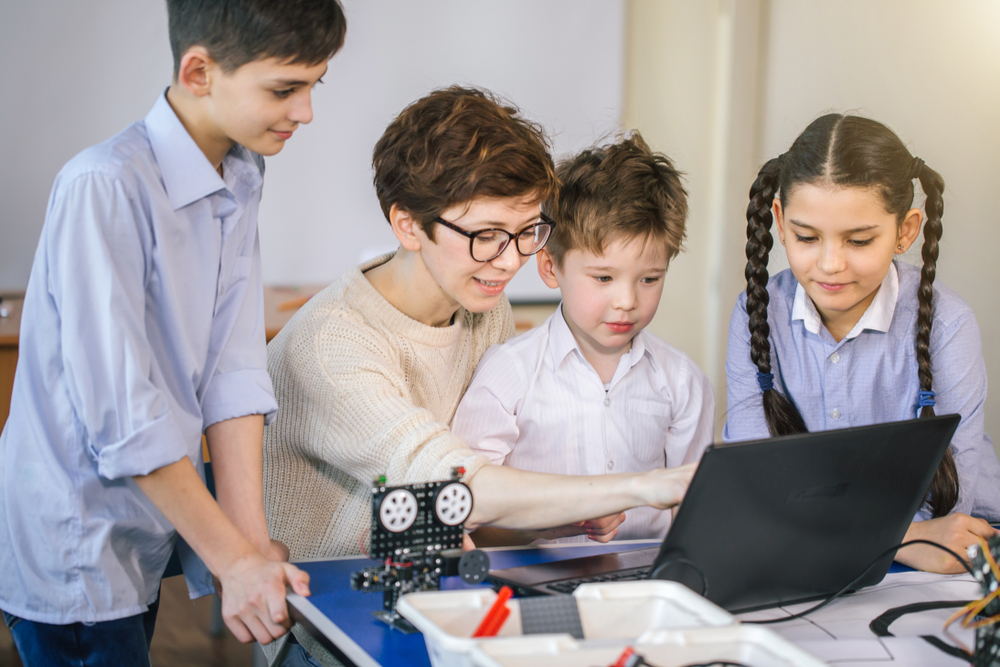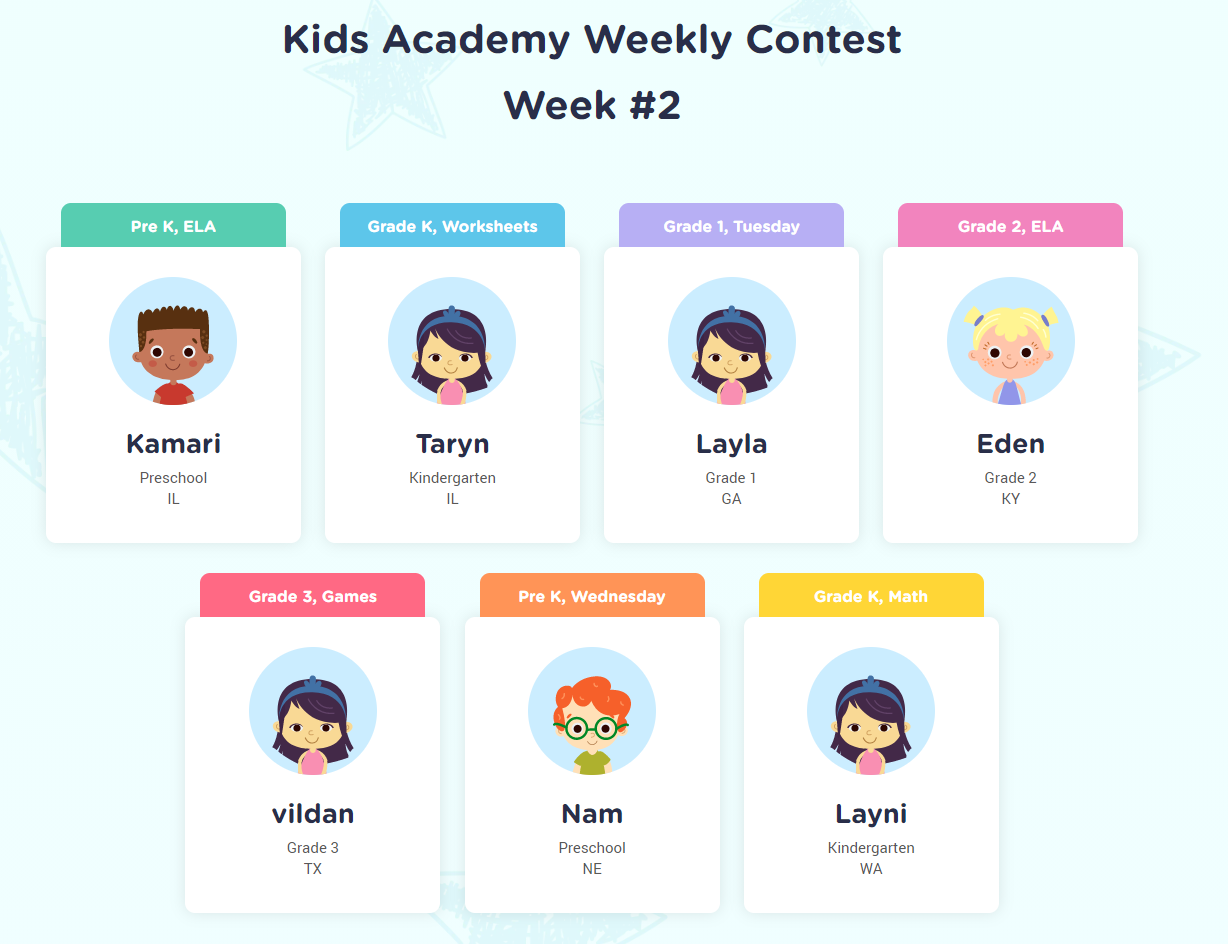Animal recognition Science Worksheets for Ages 5-8
6 filtered results
-
From - To
Discover the exciting world of animal recognition with our Science Worksheets for Ages 5-8! Designed to spark curiosity and foster a love for nature, these engaging printables help young learners identify and learn about various animals and their habitats. Each worksheet is filled with colorful illustrations and fun activities, making learning an adventure. Perfect for both classroom and home use, our worksheets support foundational science skills and ignite a passion for the natural world. Make science playful and educational with our animal recognition worksheets today!
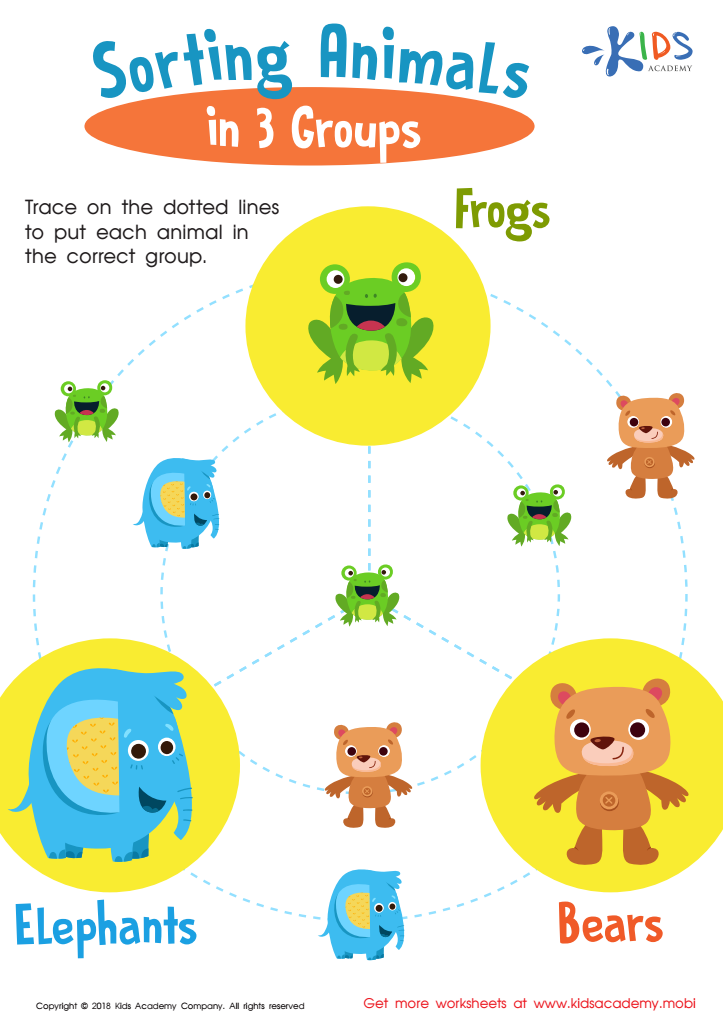

Sorting Animals in 3 Groups Worksheet
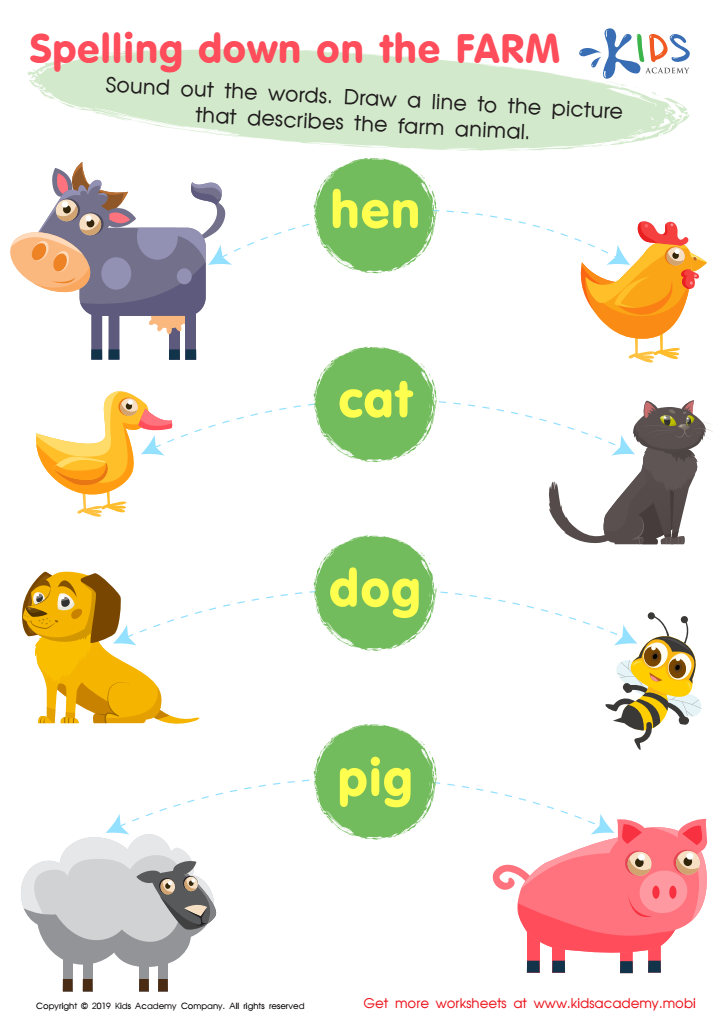

Spelling Down on the Farm Worksheet
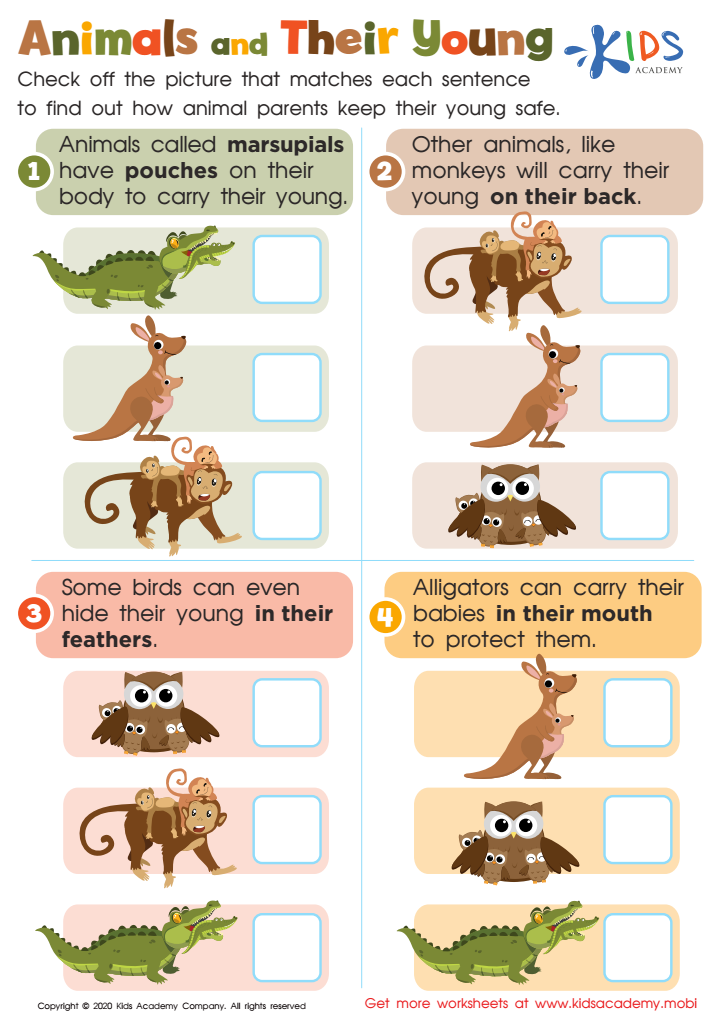

Animals and Their Young Worksheet
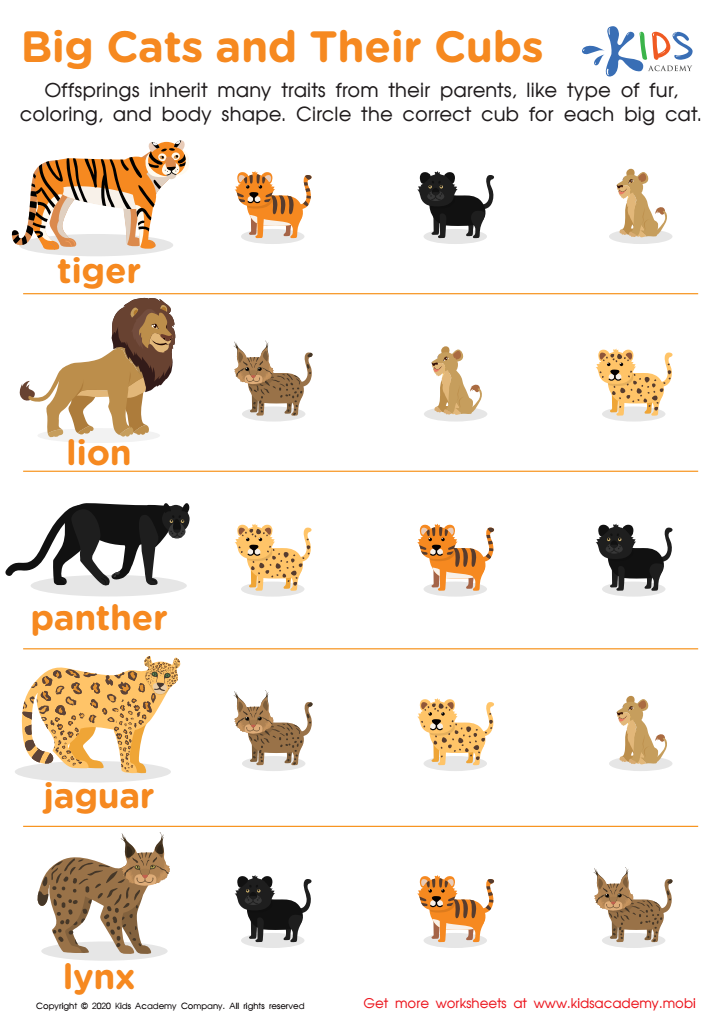

Big Cats and Their Cubs Worksheet
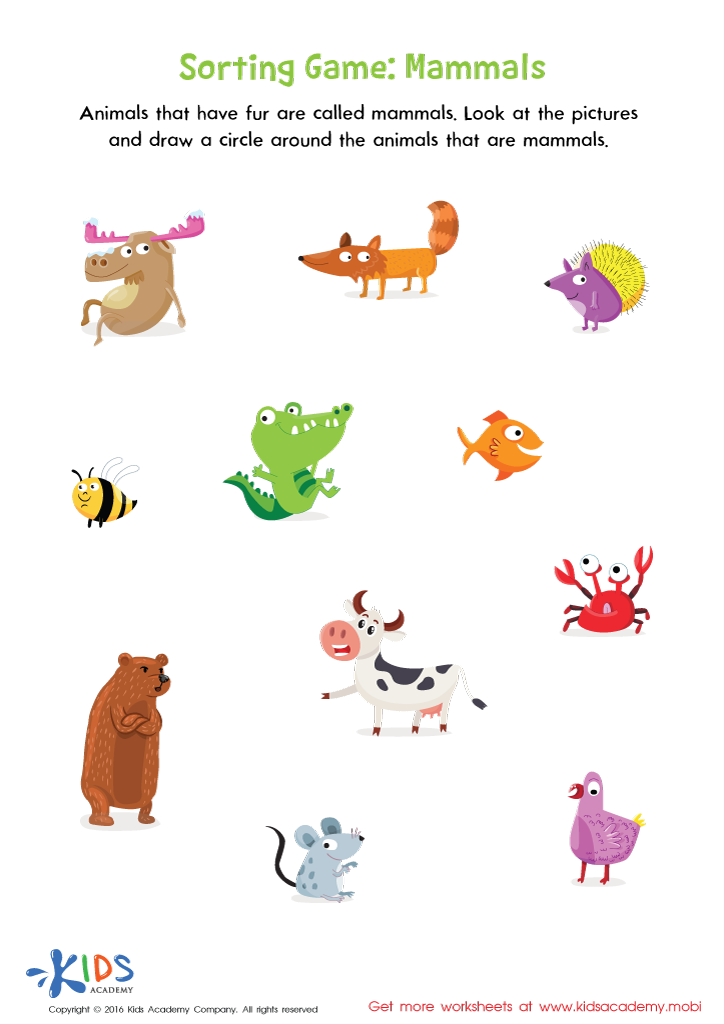

Mammals Sorting Worksheet
Animal recognition science for ages 5-8 is crucial for several reasons. Firstly, it lays the foundation for early scientific education, fostering curiosity and a love for learning about the natural world. Understanding animals, their habitats, and behaviors can engage children with captivating stories and real-life examples, making abstract concepts more concrete and relatable. This can enhance cognitive development and critical thinking skills as kids classify and differentiate between various species.
Moreover, animal recognition promotes empathy and environmental stewardship. When children learn to identify and appreciate different animals, they become more likely to develop a sense of responsibility towards living creatures and their habitats. This can lead to a lifelong commitment to environmental conservation and sustainable practices, ultimately benefiting global ecosystems.
Social and emotional learning also benefits as children work in groups, share their discoveries, and practice respect for living beings. Additionally, motor skills can improve through activities like drawing or crafting animal figures, and observational skills are enhanced during real-life interactions or virtual explorations of fauna.
For teachers and parents, integrating animal recognition science is a way to connect with children’s inherent interests, thereby making learning more enjoyable and effective. It's a powerful tool in cultivating well-rounded, scientifically literate, and compassionate individuals.

 Assign to My Students
Assign to My Students


